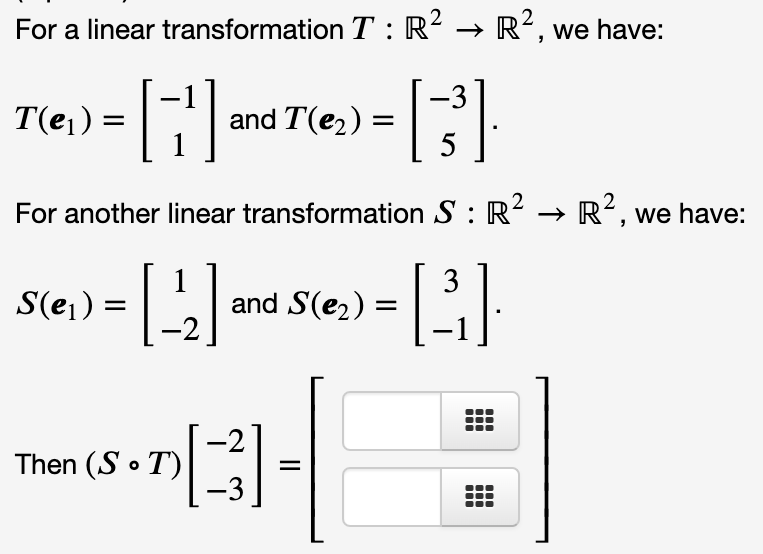Answered step by step
Verified Expert Solution
Question
1 Approved Answer
For a linear transformation T:R^(2)->R^(2) , we have: T(e_(1))=[[-1],[1]] and T(e_(2))=[[-3],[5]] . For another linear transformation S:R^(2)->R^(2) , we have: S(e_(1))=[[1],[-2]] and S(e_(2))=[[3],[-1]] . Then
For a linear transformation
T:R^(2)->R^(2), we have:\
T(e_(1))=[[-1],[1]]and
T(e_(2))=[[-3],[5]].\ For another linear transformation
S:R^(2)->R^(2), we have:\
S(e_(1))=[[1],[-2]]and
S(e_(2))=[[3],[-1]].\ Then
(S@T)[[-2],[-3]]=[[, /# ],[, /# ],[,]] 
Step by Step Solution
There are 3 Steps involved in it
Step: 1

Get Instant Access to Expert-Tailored Solutions
See step-by-step solutions with expert insights and AI powered tools for academic success
Step: 2

Step: 3

Ace Your Homework with AI
Get the answers you need in no time with our AI-driven, step-by-step assistance
Get Started


